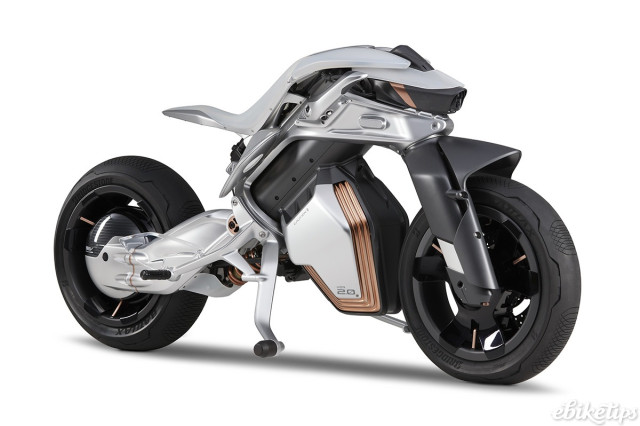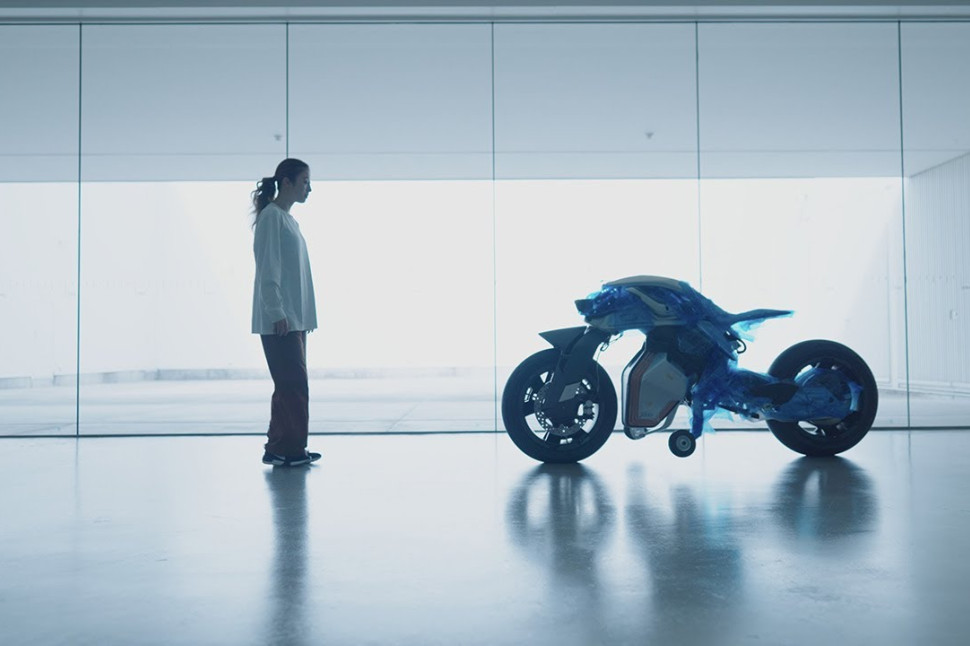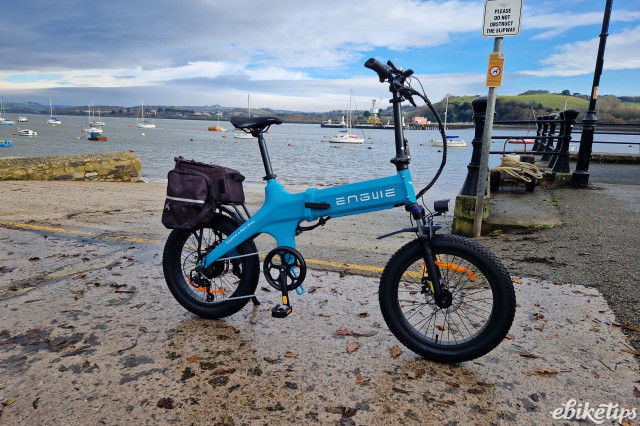What will human–machine interfaces actually be like in the future? Apparently this is the question that Yamaha were attempting to answer when they came up with Motoroid 2. In rather plainer engineering terms it looks to advance the idea of the original Motoroid from 2017 - that of the self-balancing electric motorbike.
Yamaha wax almost metaphysical in explaining their design philosophy of Jin-Ki Kanno that broadly speaking seeks ot provide a riding experience where the rider feels at one with the machine.
In the case of the Motoroid 2, this means a chassis that allows the rear half to tilt, the front thereby 'steering itself' - hence the handlebarless design.
Yamaha are also talking about the Motoroid 2 as a vehicle that, "can recognise its owner, get up off its kickstand, and move alongside its rider, but also has a distinctly lifelike feel when somebody is riding on its back and has a presence more like a lifetime companion."
Of course it wouldn't be a futuristic concept vehicle without some baffling sounding acronyms as Yamaha tell us the Motoriod 2 also has an, "Active Mass Center Control System (AMCES) for attitude sensing and self-balancing as well as the image recognition AI system for recognising and reacting to the owner’s face and gestures."
In addition to a titling rear end and myriad sensors, actuators and haptic devices, the Motoroid 2 appears to incorporate a bizarre tilting winglike structure whose purpose is never revealed.
Whilst it might be tempting to dismiss all this as an attempt to get some column inches for the company alongside some strikingly confounding imagery, the idea of the self-balancing two-wheeler is one that keeps recurring and gets a lot of interest in many quarters. The fact that this is Yamaha's latest iteration of the technology in itself might indicate they indeed view it seriously rather than as just a clever publicity tool.
Is this a serious technology?
Whilst some attempts have been made in the past to use the gyroscopic effect of the front wheel to help a bicycle lean back upright if it starts to fall over (for example on bikes to help kids learn to ride), it's clear that Yamaha's Motoroid 2 technology is much more ambitious, seemingly attempting to perfect a bike that will lean itself, in much the same way riders on all manner of two-wheelers steer effectively by leaning.
One of the most notable differences between e-bikes and e-mopeds and e-motorbikes is that, being a lot heavier, the latter two kinds of vehicles can be harder to balance at low speeds or when off the machine. Here self-balancing could help tremendously.
Indeed India's Liger are one company who have recognised the potential of a self-balancing two wheeler - though notably it doesn't appear to be on sale yet.
Whilst self-balancing machines are clearly still a fringe area of interest, it might just be that one day sensing technology develops to the extent that they do indeed become a commercial reality.









